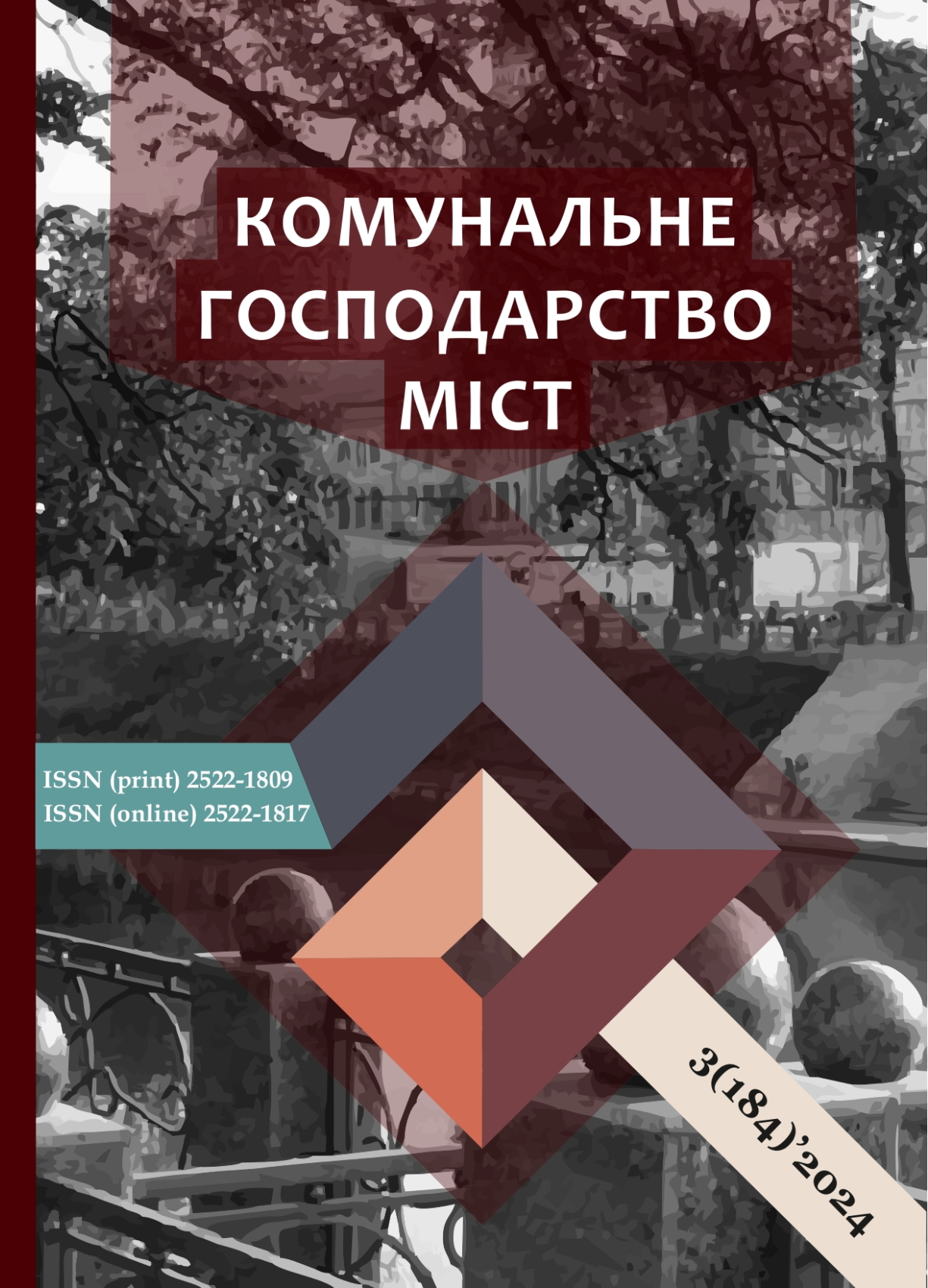CONTROL ALGORITHM FOR IMPLEMENTING THE MATHEMATICAL MODEL OF SCENARIO MANAGEMENT AS A TOOL FOR ENSURING SECURITY OF A STRATEGIC FACILITY
DOI:
https://doi.org/10.33042/2522-1809-2024-3-184-196-203Keywords:
critical infrastructure object, scenario management, algorithm, mathematical model, emergencyAbstract
The article first considers the mathematical model of scenario management as a security tool for a strategic object. Then, it develops the structure of the control algorithm for implementing this mathematical model. The study concludes with the structure of the algorithm and the need to establish basic procedures for its application.
Ukraine at war faces a wide range of tasks to protect the state, including ensuring the safety of critical infrastructure objects (CIO). Many methods, namely scenario analysis methods, can be applied to ensure the security of the CIO and other strategic objects. Based on these methods, the authors develop a mathematical model of scenario management as a security tool for a strategic object. The problem lies in the practical use of the developed mathematical model to ensure the safety of a specific CIO.
Based on the above, the article aims to create a control algorithm for the implementation of a mathematical model of scenario management as a tool for ensuring the security of a strategic object.
For this purpose, the study sets such objectives as considering the mathematical model of scenario management as a tool for ensuring the security of a strategic object, developing the structure of the control algorithm for implementing this mathematical model, analysing it, and drawing a conclusion about the structure of the algorithm and the need to establish basic procedures for its application.
Thus, the control algorithm for implementing the mathematical model of scenario management as a tool for ensuring the security of a strategic object is a hierarchical structure of thirteen blocks (or modules) located on twelve hierarchical levels, connected by direct and feedback links. It ensures the formation of private tasks of securing a strategic object, choosing a scenario management option, countering terrorist influence, eliminating consequences, preparing for a repeated attack, assessing the object’s state, and clarifying private tasks of ensuring security.
For the correct practical use of this control algorithm when solving tasks related to the protection of strategic objects and critical infrastructure facilities, it is necessary to develop detailed procedures for its application.
References
Kliuchove zavdannia nashoi derzhavy / Promovy ta zvernennia / Dostup: https://www.president.gov.ua/news/speeches
Linhart, P., Richter, R. (2003): Ochrana kritické infrastruktury. http.//www.mvcr.cz/casopisy/112/3_2003/linhart.html
Presidential Decision Directive 63 (1998), https://www.fas.org/ irp/offdocs/pdd/pdd-63.htm
The National Strategy for the Physical Protection of Critical Infrastructures and Key Assets, http://www.whitehouse.gov/pcipb/physical.html
Ukaz Prezydenta Ukrainy №8/2017. Pro rishennia Rady natsionalnoi bezpeky i oborony Ukrainy vid 29 hrudnia 2016 roku «Pro udoskonalennia zakhodiv zabezpechennia zakhystu obiektiv krytychnoi infrastruktury». Dostup: https://www.president.gov.ua/documents/82017-21058
Zakon Ukrainy «Pro krytychnu infrastrukturu» {Iz zminamy, vnesenymy zghidno iz Zakonom № 2684-IX vid 18.10.2022}. Dostup: https://zakon.rada.gov.ua/laws/show/1882-20#Text
Diviziniuk M.M. Teoretychny zasady paradyhmy «tsyvil-nyi zakhyst» / M.M. Diviziniuk, S.A. Yeremenko, O.A. Lief-tierov, A.V. Pruskyi, V.V. Strilets, V.M. Strilets, R.I. Shevchenko // Monohrafiia. Kyiv.: TOV «AZYMUT-PRINT». 2022. 335 s. (ISBN 978-617-8015-20-6).
Postanova KMU vid 04.03.2015 r. № 83 «Pro zatverdzhennia pereliku obiektiv derzhavnoi vlasnosti, shcho maiut stratehichne znachennia dlia ekonomiky i bezpeky derzhavy». Dostup: https://document.vobu.ua/doc/7863
Papalou, A., Baros, K., (2019). Assessing Structural Dam-age after a Severe Wildfire: A Case Study Department of Civil Engineering, University of Peloponnese; 26334 Patras, Greece. Buildings, 9(7), 171 DOI: http://doi.org/10.3390/buildings9070171
Jakubowski, K., Paś, J., Duer, S., & Bugaj, J., (2021). Operational Analysis of Fire Alarm Systems with a Focused, Dispersed and Mixed Structure in Critical Infrastructure Buildings, Energies 14(23), 7893; DOI: http://doi.org/10.3390/en14237893
Aliş, B., Yazici, C., & Özkal, F.M., (2022). Investigation of Fire Effects on Reinforced Concrete Members via Finite Element Analysis ACS Omega 2022, 7(30), 26881–26893 DOI: http://doi.org/10.1021/acsomega.2c03414
Azarenko O.V., Honcharenko Yu.Iu., Diviziniuk M.M., Shevchenko O.S., Shevchenko R.I. 1. Azarenko O.V., Honcharenko Yu.Iu., Diviziniuk M.M., Shevchenko O.S., Shevchenko R.I. Kharakterystyka obiektiv krytychnoi infrastruktury derzhavy (osoblyvosti yadernykh ta inshykh stratehichnykh obiektiv) // Komunalne hospodarstvo mist, 2023, tom 1, vypusk 175. S.160-168 ISSN 2522-1809(Print); ISSN2522-1817 (Online) DOI 10.33042/2522-1809-2023-1-175-160-168
Azarenko O.V., Honcharenko Yu.Iu., Diviziniuk M.M., Shevchenko O.S., Shevchenko R.I. Poniattia zahrozy ta ryzyku, yikh zahalni rysy ta pryntsypialni vidminnosti (stosovno yadernykh ta inshykh stratehichnykh obiektiv) // Komunalne hospodarstvo mist, 2023, tom 3, vypusk 177. S.153- 158 ISSN 2522-1809(Print); ISSN2522-1817 (Online) DOI 10.33042/2522-1809-2023-3-177-153-158
O.V. Azarenko , Yu.Iu. Honcharenko, M.M. Diviziniuk , O.S. Shevchenko, R.I. Shevchenko Metody doslidzhennia zahroz i ryzykiv // Komunalne hospodarstvo mist, 2023, tom 4, vypusk 178. S.269- 279 ISSN 2522-1809(Print); ISSN2522-1817 (Online) DOI https://doi.org/10.33042/2522-1809-2023-4-178-172-178
Azarenko O.V., Honcharenko Yu.Iu., Diviziniuk M.M., Shevchenko O.S., Shevchenko R.I. Metody otsinky terorystychnykh zahroz stosovno stratehichnykh obiektiv derzhavy // Komunalne hospodarstvo mist, 2023, tom 6, vypusk 180. S. 187-195 ISSN 2522-1809(Print); ISSN2522-1817 (Online) DOI: https://doi.org/10.33042/2522-1809-2023-6-180-187-195
Downloads
Published
How to Cite
Issue
Section
License
The authors who publish in this collection agree with the following terms:
• The authors reserve the right to authorship of their work and give the magazine the right to first publish this work under the terms of license CC BY-NC-ND 4.0 (with the Designation of Authorship - Non-Commercial - Without Derivatives 4.0 International), which allows others to freely distribute the published work with a mandatory reference to the authors of the original work and the first publication of the work in this magazine.
• Authors have the right to make independent extra-exclusive work agreements in the form in which they were published by this magazine (for example, posting work in an electronic repository of an institution or publishing as part of a monograph), provided that the link to the first publication of the work in this journal is maintained. .
• Journal policy allows and encourages the publication of manuscripts on the Internet (for example, in institutions' repositories or on personal websites), both before the publication of this manuscript and during its editorial work, as it contributes to the emergence of productive scientific discussion and positively affects the efficiency and dynamics of the citation of the published work (see The Effect of Open Access).

